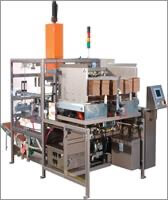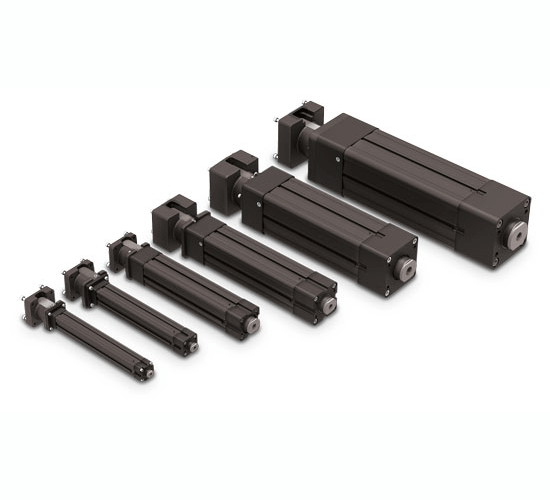The best things come in sturdy packages
By Andrew Zaske on December 15, 2020
 A wrap-up of how linear actuators are used to make boxes.
A wrap-up of how linear actuators are used to make boxes.
All those carefully wrapped presents placed under the tree need sturdy packaging to keep their contents safe. Packaging actually starts with timber processing and also includes cardboard manufacturing and box assembly. Linear actuators are used in every step of this process. Because this is the season for boxing and wrapping, we’ll concentrate on box-making in this blog.
Automatic packaging machines must efficiently and consistently form and assemble boxes of all shapes and sizes. Speed and accuracy ensure optimal operation by simplifying changeover and reducing waste. Many box-forming (or box-erecting) machines are driven by pneumatic systems.
 Pneumatic cylinders have been a long-standing and economcial solution for box-forming machines. Pneumatic systems are easy to install, durable and provide a low-cost method of meeting two-position linear motion and force requirements. However, electric linear actuators provide controlled movement and reliability advantages while meeting the same motion and force requirements.
Pneumatic cylinders have been a long-standing and economcial solution for box-forming machines. Pneumatic systems are easy to install, durable and provide a low-cost method of meeting two-position linear motion and force requirements. However, electric linear actuators provide controlled movement and reliability advantages while meeting the same motion and force requirements.
A manufacturer of box/tray former machines discovered that replacing the machine’s pneumatic system with an electric rod actuator improved accuracy, increased cycle speeds and delivered longer cylinder life. The electric actuator also provided the vertical thrust required to form trays and boxes from blank corrugated board stock.
A vertically mounted Tolomatic RSA50 rod-style electric actuator with a precision ball screw delivered the necessary force (250 lbf), stroke (23 inches) and speed (20 to 40 trays per second) requirements to form trays and boxes from blank corrugated cardboard stock.
The motor was selected with Tolomatic’s Your Motor Here database of popular servo motors, and the actuator was supplied with all the necessary motor mounting hardware.
The move to an electric actuator also allows this axis of motion to be tied into the host machine’s menu-driven changeover capability to reduce switching time between carton and/or box sizes. And, the new electric system increased machine throughput by 30 percent.
Electric cylinders come in a wide variety of packages
Why would you choose to switch from a pneumatic to electric system in your own application? In addition to improved motion control capabilities (accelerations, velocities and infinite positions), there are fewer system components and virtually no maintenance. Pneumatic systems require a cylinder, a compressor or compressed air system, valves, filters, regulators, tubing, fittings and several wear components that require frequent maintenance or change-outs. Electric systems use fewer components: the actuator, a motor, cables and a drive. The electric actuator and motor combination will be larger than the pneumatic cylinder at the point of work, but overall the “system” is smaller when you factor in the compressor and all the other components.
There are additional benefits to compare: reliability, life of the actuator, efficiency and utility costs. The complete details are in our white paper comparing pneumatic cylinders and electric rod actuators. Find out how electric actuators, correctly sized for the life of the application, offer a maintenance-free, efficient and reliable motion solution at a lower total cost of ownership compared to pneumatic cylinders.
 We hope your gift-wrapping benefits from the speed and efficiency of an electric actuator!
We hope your gift-wrapping benefits from the speed and efficiency of an electric actuator!

 Ask an Engineer
Ask an Engineer